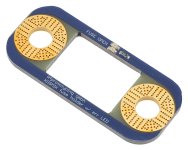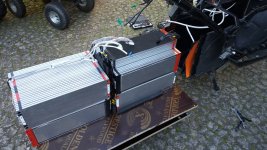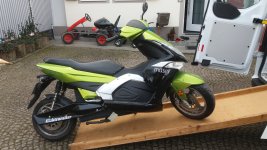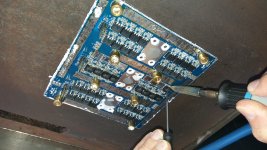Gorillazilla
10 W
- Joined
- Sep 26, 2021
- Messages
- 90
I'd like to put an inline fuse on the output leads of my battery packs for short circuit protection, just trying to figure out the correct fuse rating.
I'm using a Cyclone 3KW with the supplied 40 Amp controller at 48V 13S 7P Panasonic PF cells rated at 10A
So 70A max safe continuous output for the Cells, BMS is 60A though.
Motor Specs
* Max speed 900Rpm
* Rated speed 800Rpm
* Rated output 3000W
* Max output 4000W
* Rated Torque 50Nm
* Max Torque 100Nm
* Rated Amp 40A
https://www.cyclone-tw.com/product/6/data/17
I'm thinking one of these fuse holders https://www.ebay.co.uk/itm/143775556380?hash=item2179b0e31c:g:NIkAAOSwm8hffgsM
And 80A fuses
https://www.ebay.co.uk/itm/392405167271?hash=item5b5d2baca7:g:ciIAAOSwn1RXIkaQ
So 10 amps above the safe maximum of the cells in the pack, the fuse should blow.
Should blow fast enough in a short circuit to protect the cells from damage but without being too weak to handle burst current?
Have I got this right or should I go lower or higher for any reason?
Maybe the 60A BMS would need a lower rated fuse to protect it?
Or is there a better way altogether?
I'm using a Cyclone 3KW with the supplied 40 Amp controller at 48V 13S 7P Panasonic PF cells rated at 10A
So 70A max safe continuous output for the Cells, BMS is 60A though.
Motor Specs
* Max speed 900Rpm
* Rated speed 800Rpm
* Rated output 3000W
* Max output 4000W
* Rated Torque 50Nm
* Max Torque 100Nm
* Rated Amp 40A
https://www.cyclone-tw.com/product/6/data/17
I'm thinking one of these fuse holders https://www.ebay.co.uk/itm/143775556380?hash=item2179b0e31c:g:NIkAAOSwm8hffgsM
And 80A fuses
https://www.ebay.co.uk/itm/392405167271?hash=item5b5d2baca7:g:ciIAAOSwn1RXIkaQ
So 10 amps above the safe maximum of the cells in the pack, the fuse should blow.
Should blow fast enough in a short circuit to protect the cells from damage but without being too weak to handle burst current?
Have I got this right or should I go lower or higher for any reason?
Maybe the 60A BMS would need a lower rated fuse to protect it?
Or is there a better way altogether?






